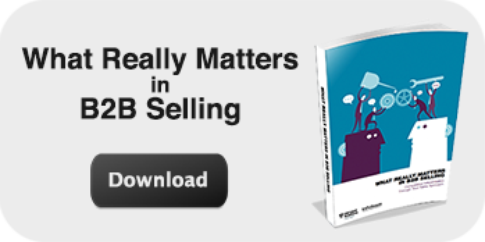A tough negotiation

“OK, we want to renegotiate our insurance premium with you. We have more properties around the world than last year and even though you reduced our premiums for the last 2 years when times were tough, and we made claims, and we are doing better now - we still want another reduction. Oh, and all the rest of the business you do with us depends on getting a reduction.”
When you get a call like this (and my customer did) how do you start negotiating?
Systematic negotiation
We all negotiate in our daily lives whether it’s getting our kids to eat vegetables or haggling over a used car. Most Sales people think they are good negotiators and enjoy it. But when you are faced with a situation like the one above you need a highly structured approach – we call it a Deal Roadmap.
The Deal Roadmap
This is the starting point in preparing for a negotiation. It helps the Sales Team understand where they are, define the goal they want to reach and set out the path to achieve it. Essentially it puts together in one place all the crucial information like who is in the Buying Centre, what the customers’ goals are, and the strengths and weaknesses of both negotiating positions.
In this particular case it was important that the Deal Roadmap included all critical issues of the negotiation like the premium, the wording of the policy, the deductibles, and all aspects of the previous and current claims.
Preparing the team
Complex negotiations like this may require several people from different disciplines to be in the room and a meeting like this can be very tense. It is vital that they are all carefully briefed, especially as a skilled negotiator on the other side will try and divide your team. Team members must know what their role is and must be very clear on the limits they can negotiate within. It’s hardly a successful negotiation if you keep the business but lose money on it! So you start with an opening position, a target and a bottom line.
Trading variables of unequal value
These can be the key to a successful negotiation. In most cases there are things that you can do for a customer that are of high value to them but relatively cheap and easy for you to provide. Trading variables raise the overall number of items in the negotiation. Customers become less price-sensitive and your own value to the other party increases.
In the case of our client they were able to offer Risk Reports and direct access to claims experts that were very valuable to the client but easy for them to create.
Just as an illustration, let’s say the customer faces a damage of M€ 25 and with direct access to claims experts, the claims can be handled much quicker, instead of 6 months processing time only in 3 months. Having the damage amount of M€ 25 three months earlier creates a high value for this customer.
How did the negotiation go? I am glad to say my client kept the business and I like to think it was because they followed the Negotiation Process set out by Infoteam. They were able to negotiate an increase in the premium with no changes to the wording or deductibles and kept negotiations about the other lines of business separate. Of course they made some concessions; they agreed to a long term agreement and they provided some Risk Reports and claims expertise as part of the package.
3 ways to keep both sides happy
Both sides must be willing to make at least some concessions otherwise there can be no negotiation. But once this is established, you should prepare by doing the following: -
-
Create a Deal Roadmap
-
Agree with the team on the opening position, a target and a bottom line
-
Brainstorm some Unequal Value bargaining elements
Questions to challenge your way of working
-
Are you satisfied with the result of most negotiations?
-
Do you prepare systematically for negotiations?
-
Does your team really understand how to retain profit?
Enjoyed this blogpost? Download our eBook:


